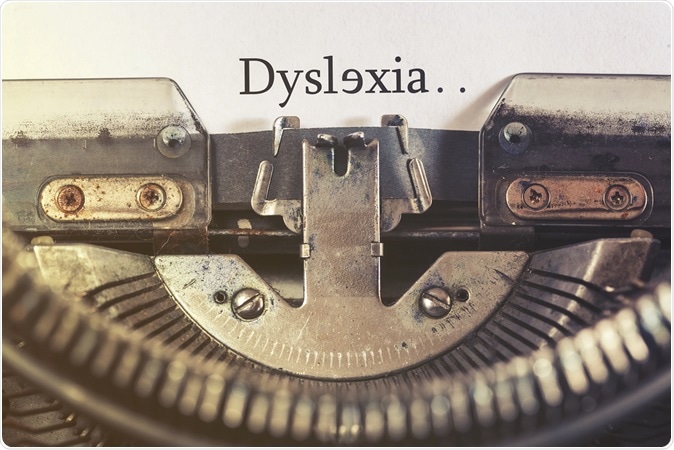Latest research shows that dyslexia may be the cause of inability to spot clearly. A study with a small number of participants has revealed that most persons with dyslexia have dominant spots in both their eyes that cause them to see blurred images leading to their confusion with letters and reading, spelling and writing.

Image Credit: Yiorgos GR / Shutterstock
Dyslexics have learning difficulties despite having normal intelligence because of their incapability to decipher letters and words accurately. The study from University of Rennes entitled, “Left–right asymmetry of the Maxwell spot centroids in adults without and with dyslexia” was published yesterday, 18th of October 2017 in the journal Proceedings of the Royal Society B, Biological Sciences.
The team of researchers analyzed the eyes of 30 individuals with diagnosed dyslexia and 30 people who did not have dyslexia. They looked deep within the eyes using an instrument called a foveascope. The eyes of both have rods and cones – the former for vision and the latter for detailed color vision. Deep within the eyes, they noted that a round spot with no blue cones was seen in people without dyslexia. In the other eye this spot was oval or elliptical in shape. The round spot was the dominant one compared to the other eye. Among dyslexics, both eyes seemed to have this round spot. This means that neither of the eyes are dominant. This confuses the brain as both eyes send it different images.
According to the authors of this study Albert le Floch and Guy Ropars, it could be this symmetry of the round spots in the two eyes that could be the basis of dyslexics not being able to read or spell clearly. They explain that the brain receives two different images in this case and gets confused.
Dyslexia
Dyslexia is a form of learning disability. It may be inherited or acquired from environmental causes and affects around 10% of the population. A person with dyslexia usually has difficulty in reading and spelling words.
Symptoms may be mild to severe in a wide range of problems with reading, writing and speech. There may be phonological unawareness. This means that dyslexics that difficulty in spelling using phonics or sounds. For example, a child with dyslexia may not understand how replacement of the letter “m” in the word “men” with the letter “t” makes it “ten.” There is also impaired verbal memory for short lists of items that has been read out to them. Problems with rapid serial naming are another symptom of dyslexia. Most dyslexics fail to name numbers, colors or objects in rapid series based on their groups. They also have difficulty in processing verbal instructions. For example, a child with dyslexia may not be able to write down a telephone number they are told or may have difficulty turning to a particular page number when instructed to do so. Despite these problems, the intelligence of the dyslexic person may not be affected.
Dyslexia may be difficult to diagnose when a child is very young but the condition is generally diagnosed once the child starts schooling. This usually starts with the problems that the child faces as they start to learn the letters of the alphabet and start to use words.
The treatment approach varies, depending on the severity of the condition. Several educational programs and interventions can help kids with dyslexia. If these are adopted early, the abilities of a child with dyslexia to read or spell may improve with time. Majority of children respond well to interventions and go on to progress in their learning, but other children continue to experience reading and writing difficulties and will require more intensive and longer term support.